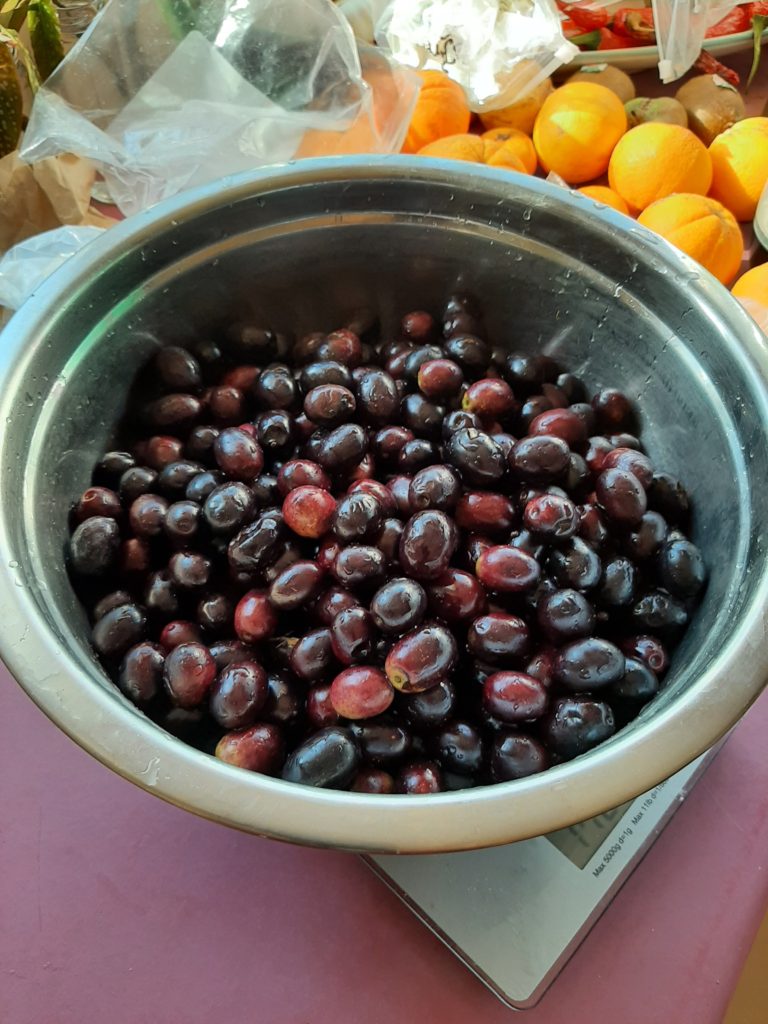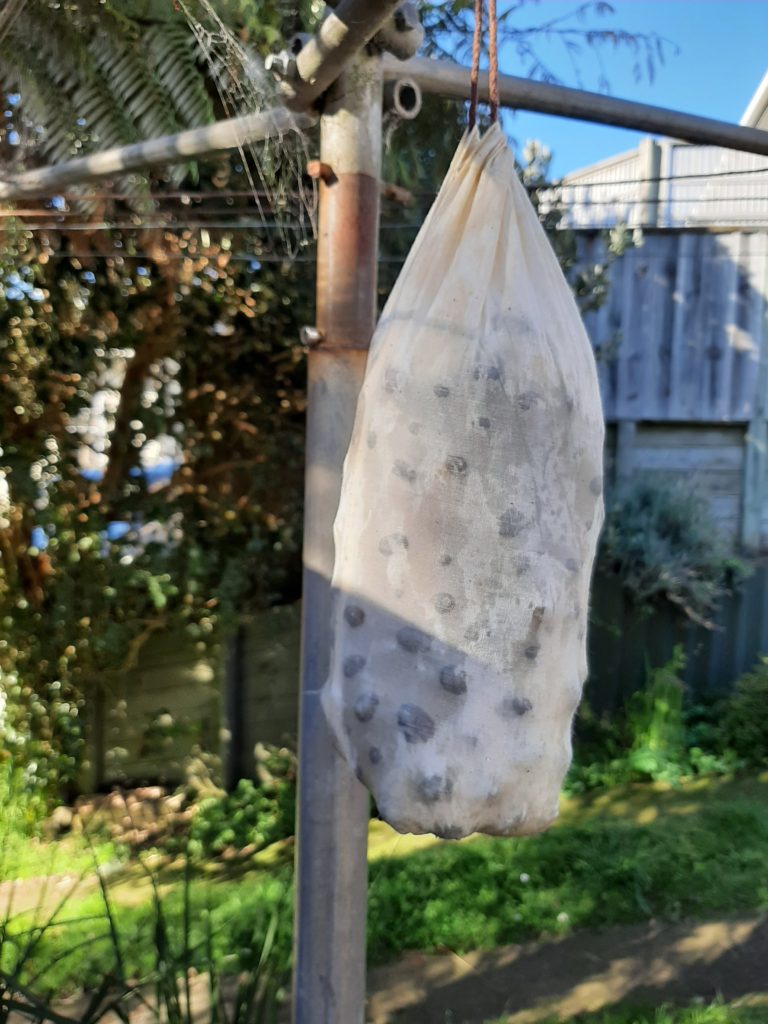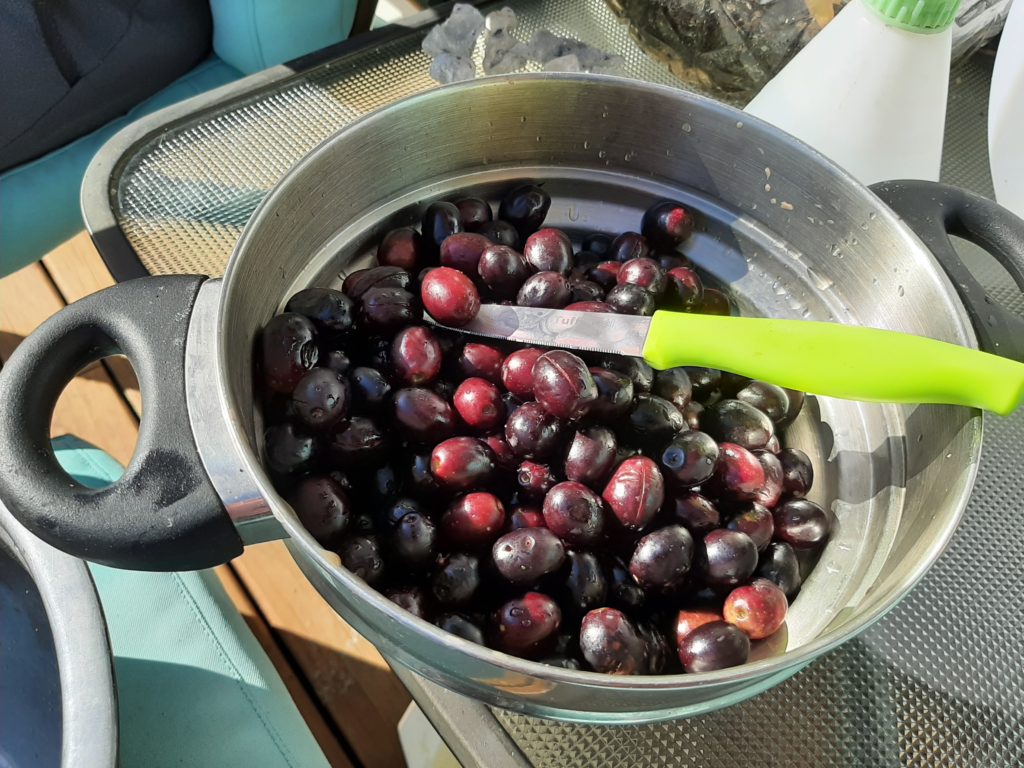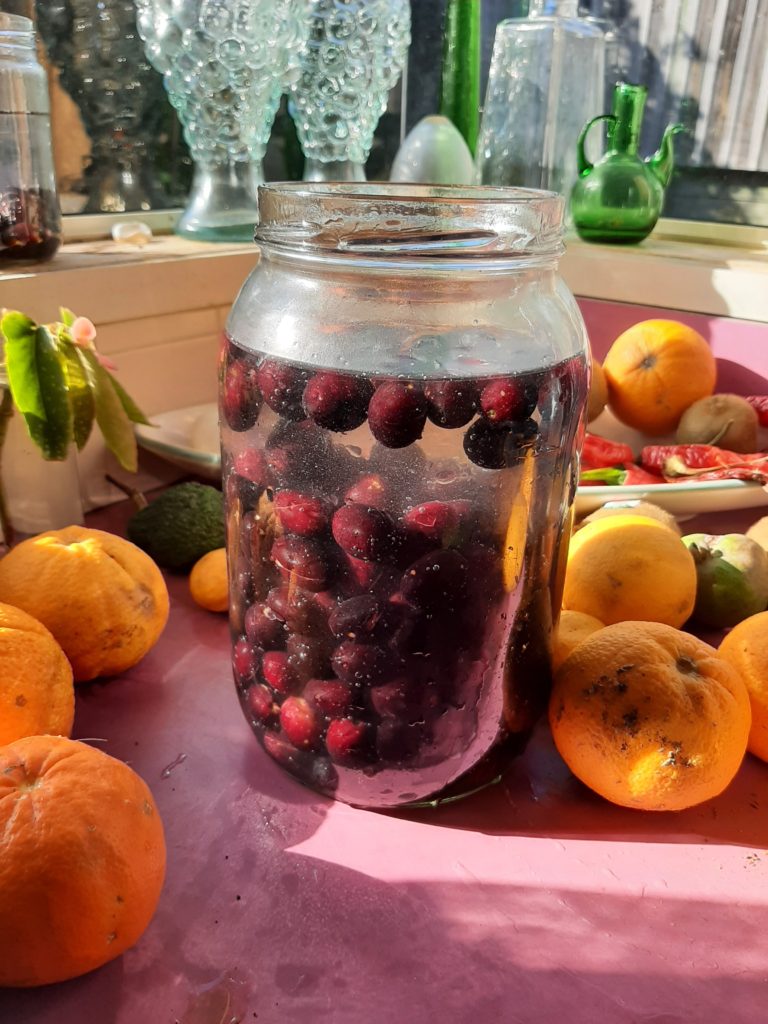Well, more than a year has gone by since I’ve written of anything food or kitish… But so it goes…
We have two olive trees that were put in the ground when somebody only wanted the planters. So they’ve been there, growing, for 6 or 8 years I guess.
In past autumns, there might be a few olives on the ground, but not enough to do anything with. But this year has been different…
The “collecting and needing to deal with” came suddenly, and some of the earlier olives may have still been pretty immature. The worst problem is birds. Almost all of the olives would have a peck taken out of them, so collection was pretty slow.
But we ended up with about 3 or 4 litres of olives. OK, now to the processing: do not eat an olive that has fallen from the tree. Or do – see if I care. An uncured olive is one of the most bitter, unpleasant flavours that there is.
So since I was researching in a hurry, most of these olives were cured in a saline solution (1:10 salt:water). And changed the solution every few days or a week.
So that’s the ones in the pantry just now, mostly. They are pretty good, but still sometimes a bit more bitter than even I prefer.

So last week Averil spotted another olive tree on the side of the road nearby. We rode over this morning to collect nearly 1.8 kg (nearly 4 pounds) of plump, black olives – with hardly any insect or bird damage.
I took a few photos as I dealt to them. I took the first half to do what is called “oil cured” olives. As misleading as it can be! You don’t cure them in oil. In fact, you just hang them in a muslin bag, along with about the same weight of salt. That’s it.

The first lot I did took about 4 or 5 weeks of just hanging outside on the clothes line. Yes, just hanging out there in the rain. And when there wasn’t much rain, I watered them. By the time I brought them in, there was still salt on the surface, but they had wrinkled and turned black. A quick rinse to get rid of the surplus salt, and we’ve got some pretty damn good olives – had them on a pizza just the other night!
So I’ve done half of today’s olives that way. After hanging out there, and rinsing, the “oil cured” comes into it when you put a small bit of olive oil in the jar and shake them around…

For the other half of what we got today, I’m using what I think is a more ‘traditional’ Greek approach. Rather than putting the olives into a brine to cure, this method has you put them into fresh water, and then keep changing the water every day or three.
But this method has some extra labour. While the brine has no problem going into the olives as they cure, plain water won’t go in so readily. So each olive has to have a small slice in it, with one source saying “don’t cut on the pip – it makes it even more bitter…”. It wasn’t as bad as it sounds, sitting on the deck in the sunshine.

It should take some weeks of regular water changing before the bitter is gone. And only then would they perhaps have some storage time with a 10% salt solution, to give them a bit more flavour and help with storage.
As the olives cure over time, you can almost see the bitterness being washed out, whether it is with brine or with plain water. After a time, the water you are changing is sort of a purple colour.
When I first ate some of our own cured olives, I had to try to pretend to myself that they were really commercially prepared ones. I simply couldn’t believe that I would be able to turn that absolutely wretched flavour of raw olive into something that could be pleasantly eaten and enjoyed…